
256-340-5188
1206 Somerville Rd
Decatur, AL 35603

256-340-5188
1206 Somerville Rd
Decatur, AL 35603
This page discusses problems with leaking silicone breast implants.
I have extensive experience in dealing with all types of breast implant problems. One of my specialties is consulting with patients that have silicone breast implants, especially if those implants are many years old. Leaking silicone implants are a big problem and each case presents unique problems. As you will see with the cases presented below, you would not want leaking silicone implants in your body.
1st Generation Of Silicone Implants - 1962
The Dow Corning Cronin-Gerow implant. It was tear drop shaped and had a Dacron patch on the back to hold it in position. This patch was a bad idea because as the body moved shear forces would cause tears at the junction of the patch. This would allow the liquid silicone to leak out.
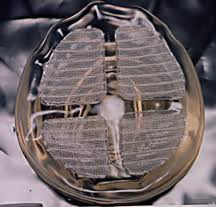
2nd Generation Of Silicone Implants - 1970's
Dow Corning silastic I implant was round, had a thin shell without a patch and was filled with a liquid silicone filler. This implant had a high shell rupture rate and even intact shells would "bleed" out the smaller molecules of silicone gel. Also released in the 1970's was an implant wrapped in a polyurethane cover which helped decrease hard capsule formation. The breakdown of the polyurethane was thought to release a carcinogen. Implants that had two lumens were also tried in the 1970's. The two lumen implants had a silicone bag on the inside surrounded by a saline filled lumen. These were designed to stop silicone gel bleed but the system failed because the attachment point of the two lumens would weaken with daily motion and cause the implant to tear.
Patients with implants 2nd generation implants, manufactured prior to 1986, should seriously consider an MRI scan to evaluate the condition of the implant shell. And even with a MRI read as normal, they should consider implant removal because of the known problems with silicone gel bleed with these implants.
3rd and 4th Generation Of Silicone Implants - 1986
Dow Corning silastic II implant came both round and tear drop shaped. It has a thicker more durable shell designed to limit silicone bleed. It had a lower shell failure rate.
5th Generation Of Silicone Implants - Mid 1990's to Now
Cohesive Gel implants that have a thicker semi-solid silicone filler that does not flow like a fluid. However, the gel is still very sticky. Next will be true "form stable" implants that have a thicker filler that leads to the term "gummy bear" implants. These have been available in Europe and are being released in the United States. The durability of the 5th generation implants should be better, but shell failure will still expose the body to silicone gel. The only way to follow the integrity of a silicone implant is with MRI scans. Presently the FDA recommends having a MRI scan of the implants 3 years after the surgery date and every two years after that. The problem is, how many women are going to spend over $1,000 for and MRI scan every two years forever?
Cohesive Gel Is Sticky
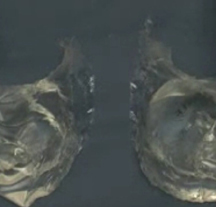
Cohesive Gel Is Thick
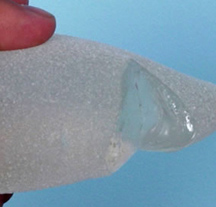
The Patient Had Old Silicone Implants Placed After Subcutaneous Mastectomies.
The Right Implant Was Completely Ruptured And Leaking, The Left Implant Was Not Ruptured But Had Significant Gel Bleed.
Her Implants Were Replaced With Saline Implants
Before
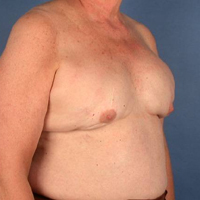
Ruptured Implant
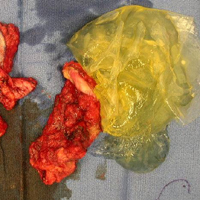
Gel Bleed

After
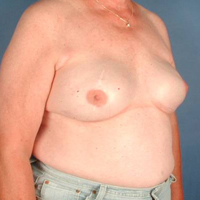
The basic goal of these procedures is to remove the leaking silicone implants and the biologic capsule together and not allowing the free silicone to escape from the capsule. Secondly, I want to reconstruct the patient with saline implants, or reshape with a breast lift without putting in a set of implants. Some patients will decide to remove the implants and capsules and not do any further procedures to shape the breast. This of course leaves a deflated looking breast envelope.
The Patient Had Old Silicone Implants Placed After Subcutaneous Mastectomies.
Her MRI Study Showed The Classic "Linguini Sign" That Shows The Black Lines Of The Shell Floating In The White Silicone Gel.
The Both Implants Were Completely Ruptured And Leaking Therefore The Gel Is In Direct Contact With The Body.
I Removed The Right and Left Implants By Keeping Them Inside The Biologic Capsule To Preven Get Leakage
Her Implants Were Replaced With Saline Implants
Before
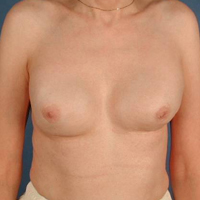

Left Capsule
Right MRI
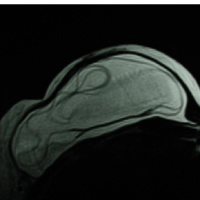
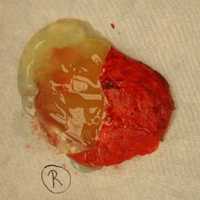
Right Gel Leak
Left MRI
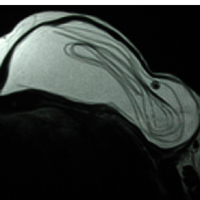
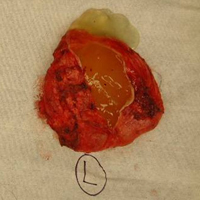
Left Gel Leak
Right Capsule
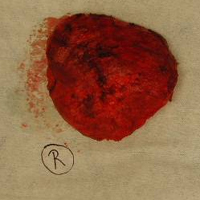
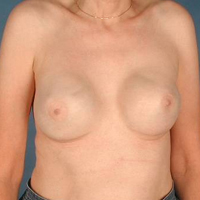
After
During your initial consultation we will discuss all of the aspects of the operation and how it relates to you. We will have a second visit that is the pre-operative visit where I will answer all of your final questions, write the prescriptions for the medicines you will need after the surgery and you will do your pre-operative visit at the hospital.
This procedure will not be covered by insurance if the original implants were placed for a cosmetic augmentation of the breasts. If the implants were placed after breast reconstruction for breast cancer or sever fibrocystic disease, then I can submit for insurance coverage. Often the insurance companies will only pay for the portion of the procedure that deals with removing the implants and the capsules, they will not pay for new saline implants or a mastopexy to re-shape the breasts.
The Patient Had Old Silicone Implants Placed For Cosmetic Augmentation.
Her Mammogram Study Showed Injection Of Silicone Into The Breast Tissue.
The Both Implants Were Completely Ruptured And Leaking Therefore The Gel Is In Direct Contact With The Body.
The White Material Inside Of The Capsules Is Calcium Deposits Due To The Inflammation From The Gel Contact.
Here Breast Were Reshaped With A Mastopexy, No Implants Were Used.
Before
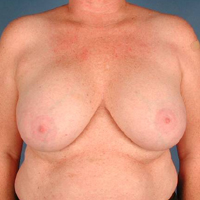

Leaking Implant
Before
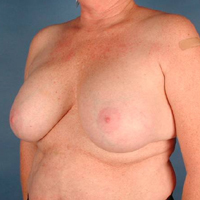
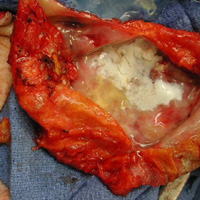
Calcium Deposits
Mammogram
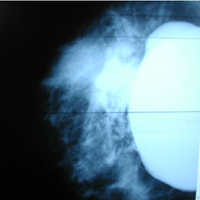
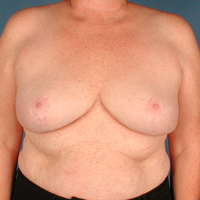
After
Mastopexy Marks
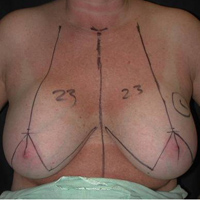
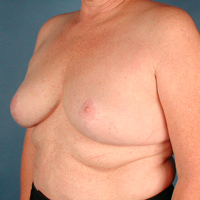
After
All patients are unique and the response to post-operative discomfort is variable. Removing the entire capsule can cause pain especially if the original implant was in a sub muscular pocket. Some patients take the narcotic medicine only for a few days and then switch to Tylenol for pain. Some patients take a narcotic medicine for 3 or 4 weeks after the surgery. As I said, patients are all unique and their pain tolerance is very different. Almost all patients feel normal by 4 weeks.
For a desk job that does not require any heavy lifting you should expect to be away from work for 2 weeks. Some women have gone back to a desk job in as little a 1 1/2 weeks. For a job that requires physical exertion or heavy lifting you should expect to be away from work for 4 weeks. If there are any small healing problems with your breast we may keep you off of work for an additional 1 to 2 weeks or consider a light duty job if that is available at your job after the 4 weeks period.
The Patient Had Old Silicone Implants Placed For Cosmetic Augmentation.
The Both Implants Were Completely Ruptured And Leaking Therefore The Gel Is In Direct Contact With The Body.
Here Implants Were Replaced With Saline Implants.
Before
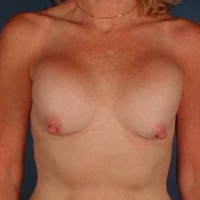
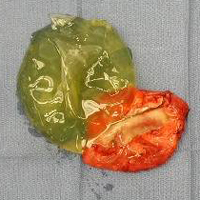
Leaking Implant
Before
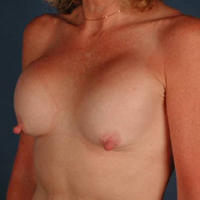

After
Leaking Implants
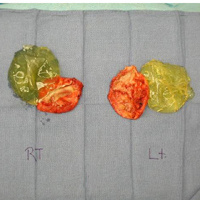

After
You will need to come to the office usually two days after your surgery and you should arrange for someone to drive you to this appointment because you will be sore and on narcotic medications. At this first postoperative check, I will change your dressings and check your drain tube output amounts. There is not a set time to remove the drains after a surgery like this. You will measure the drain outputs at home and I will monitor the outputs when you come to the office. I will remove the drains when the outputs are low enough and this could take 3 to 7 days. Removing the drain tubes pinches a little but is not terribly painful. You will go home with a light gauze dressing that you will change every day for 3 days. I do not use any special postoperative surgical bras. You can take a full shower 24 hours after you drains are removed. You will take off your dressings, shower, soapy water will not hurt your incisions, pat yourself dry and replace your light dressings.
Your next appointment will be in approximately 1 week. The next appointment will be in 2 weeks and at that time we will begin discussing issues like returning to work and shopping for a regular bra.
Your next appointment will be in approximately 1 month. After that I will see you again in approximately 6 months. Therefore, I will see you between 8 months and 12 months after your surgery and do a final assessment of your size and shape, assess the quality of your scars and get your final opinion on the surgery.
You can shop for a regular bra once most of the initial post-operative swelling is resolved and there are no wound problems. This is usually 3 to 4 weeks after the surgery. You can wear a very lightweight sports bra or a camisole earlier then this if you discuss it with me in the office. Generally you can resume all of you normal activities, including physical exertion and exercise after 4 to 6 weeks. You should wait at least 6 months before getting another mammogram.
Another Example Of MRI Information.
This MRI Shows Deep Wrinkles or Invaginations Of The Shell. This Is Evidence Of An Old Under-Filled Silicone Implant.
This Is Different From The Linguini Sign Shown Above.
Although The Implants Were Not Ruptured, Old Implants Can Have Gel Can "Bleed" Through The Implant Shell Allowing The Body To Have Direct Conatct With The Gel
Left MRI
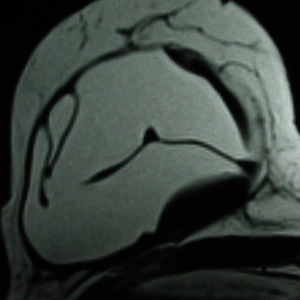
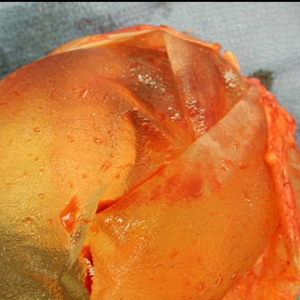
Implant Folds
Right MRI
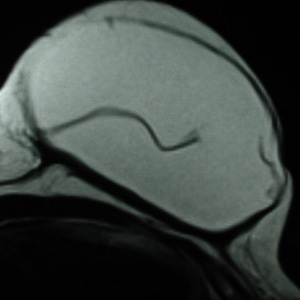
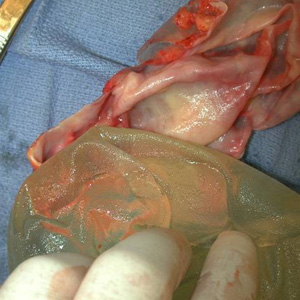
Gel Bleed
This Patient Has Implants That Are Over 30 Years Old.
She Fell Directly On her Chest And Caused The Left Implant To Extrude A Large Amount Of Free Silicone Gel Into Her Left Breast Tissue.
The Mammogram Shows The Silicone Injected Into The Breast Tissue
The Silicone Is Beneath The Skin And Is Causing Inflammation
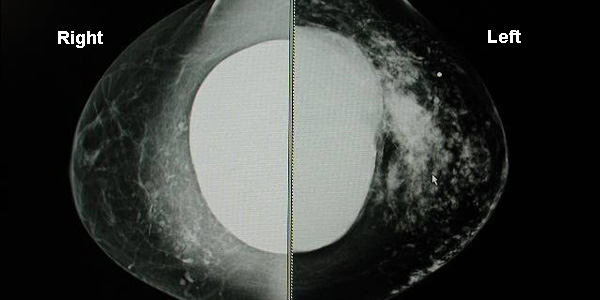
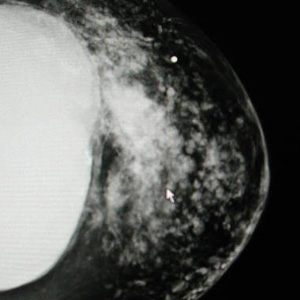
Silicone In Tissue

Skin Inflammed
© 2005 - 2020 Gordon M. Telepun, MD
Providing care to patients in Decatur, Huntsville, Madison, Hartselle, Florence, Muscle Shoals
Photographs May Not Be Reproduced, Written Text and Descriptions are Copyrighted and May Not Be Reproduced